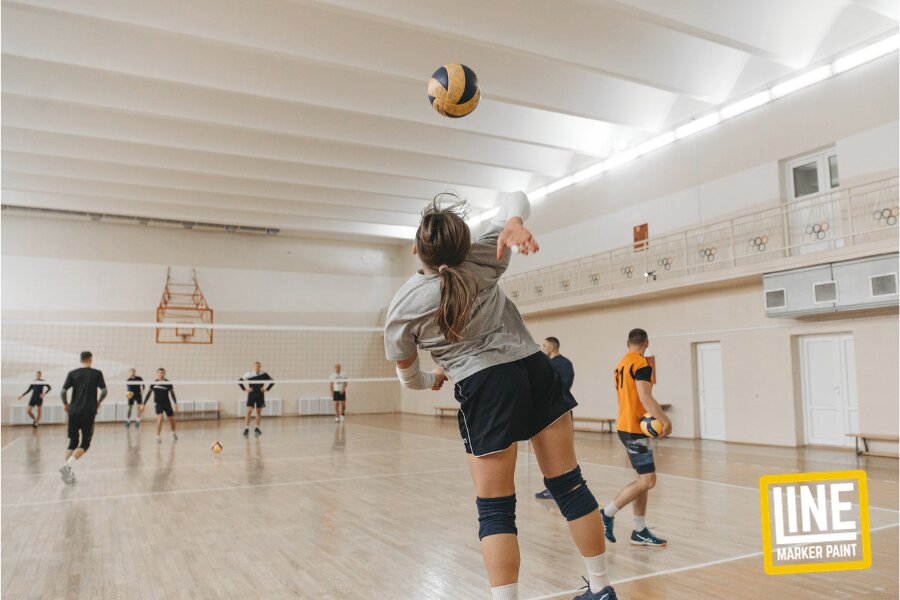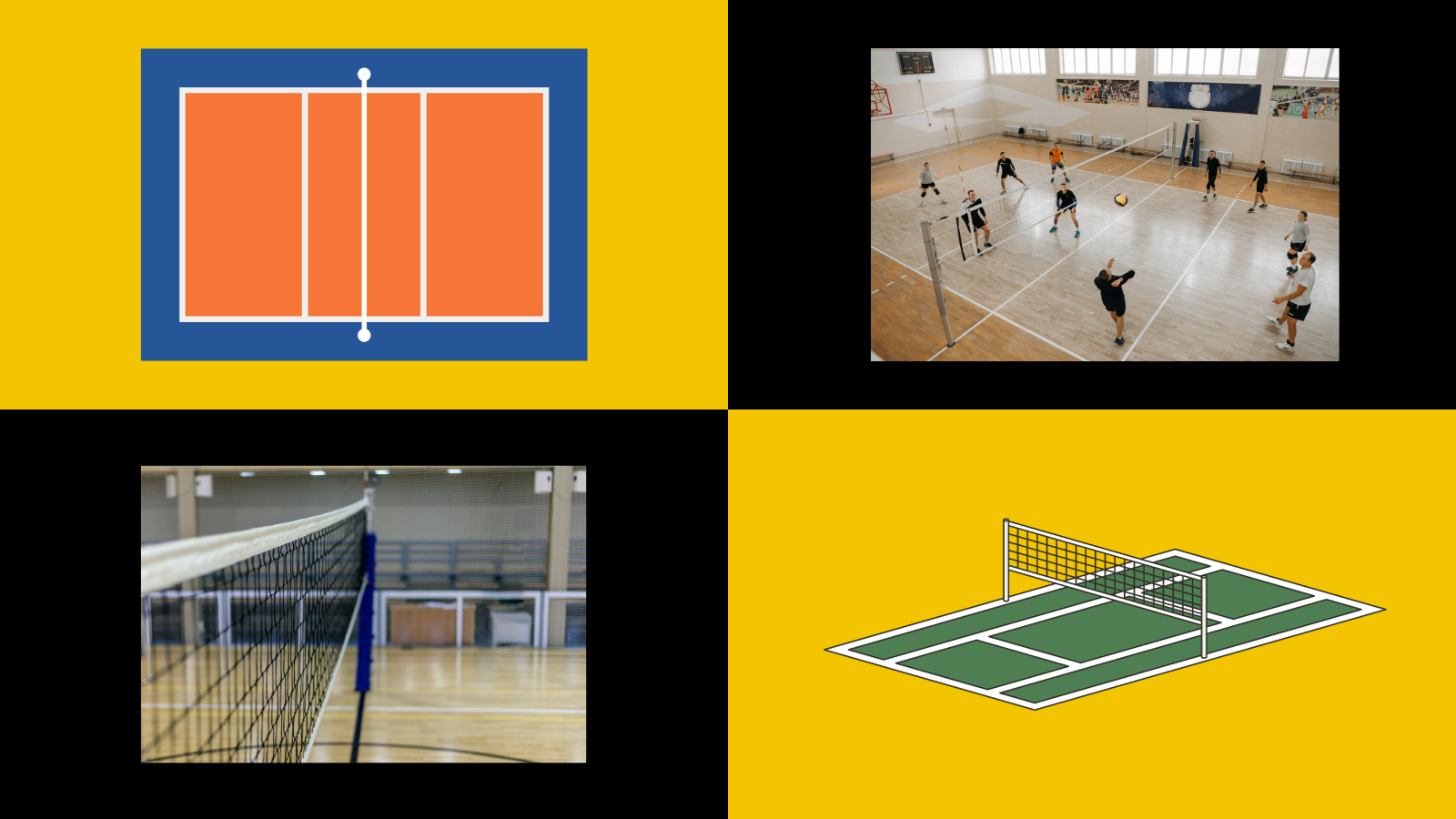The Dimensions of a Volleyball Court

INTRODUCTION:
Volleyball is known as a captivating and dynamic sport. It has maintained a consistent presence at the Olympic Games since its introduction at the 1964 Summer Olympics in Tokyo. In recent years, teams like Brazil, Italy, the United States, Poland, and Russia have been strong contenders in both men's and women's volleyball. We all know that the highest speed on the motorway is limited to ensure safety, which is 70 miles per hour. Have you ever imagined that volleyball could reach the same speed? At the professional level, elite volleyball players can generate powerful and fast serves, spikes, and digs. The speed of serves can reach over 70 miles per hour for top players. Spikes or attacks also involve fast movements, with speeds often exceeding 60 miles per hour. Similarly, in a volleyball game, there are certain dimensions and boundaries that must be followed to ensure fair play and maintain the integrity of the game.
OVERALL DIMENSIONS:
From the thunderous spikes to the strategic digs on indoor courts, every volleyball competition reveals the extraordinary skills and unwavering determination of professional players. In volleyball, teams are permitted a maximum of three consecutive touches, encompassing actions such as the serve, before they must strategically send the ball into the opposition's half. This dynamic play involves six players on each side, each contributing to the game's flow with a combination of serves, passes, sets, and attacks.
According to Fédération Internationale de Volleyball (FIVB) specifications, players engage on a court spanning 18 metres in length and 9 metres in width, resulting in a total playing area of approximately 162 square metres. The delineating attack line, positioned 3 metres from the net on both halves, distinguishes the frontcourt from the backcourt. Occasionally, this attack line may be extended with a dotted line measuring 0.91 metres on both sides. In general, the boundary lines and the centre line are 5 centimetres (2 inches) wide, while the attack line would measure a width of up to 10 centimetres (4 inches).
The volleyball court is divided into two equal halves, each measuring 9 metres, with a net positioned above the centre line. For men's competitions, the top of the volleyball net stands at 2.43 metres, while for women's competitions, it is 2.24 metres. Scoring points in a volleyball match typically occurs through successful spikes into the opposing team's half. However, teams can lose points due to various faults, such as touching the net with any part of the body or stepping over the serving line.

SIDELINES:
As previously stated, a volleyball court measures 18 metres in length. The sidelines are spaced 9 metres apart. However, there is a free zone between the sidelines and the surrounding walls or barriers, which allows players to safely move around the court without obstruction. This free zone also serves as a buffer to prevent injuries from collisions with the walls or barriers during intense gameplay. The free zone boundaries are normally 3 to 5 metres away from the sidelines.
Estimation: With a standard Zebra hard surface line marking machine, approximately 0.14 litres of paint would be needed for two sidelines.
BASELINES:
At each end of the court are the baselines. They are the furthest lines from the net and are used as crucial reference points for serving and returning the ball. It helps players determine if their shots are in or out of bounds. The baselines are typically marked with a solid line to clearly distinguish them from the other lines on the court. Each of them is 9 metres long. The free zone boundaries are normally 3 to 6.5 metres away from the baselines.
Estimation: With a standard Zebra hard surface line marking machine, approximately 0.07 litres of paint would be needed for two baselines.
CENTRE LINE:
The centre line splits the playing court into two equal sections, each measuring 9 metre squares. This line is right beneath the net, extending across the entire width of the court (9 metres) from one sideline to the other.
Estimation: With a standard Zebra hard surface line marking machine, approximately 0.04 litres of paint would be needed for the centre line.
ATTACK LINES:
These 9-metre lines separating the front and back rows on each court run parallel to the net at a distance of 3 metres. These lines are essential for determining the positioning of players during a game. They help to ensure that players are not crossing into each other's designated areas, allowing for fair play and strategic movements.
Estimation: With a standard Zebra hard surface line marking machine, approximately 0.07 litres of paint would be needed for two attack lines.
MARKING THE LINE:
The Zebra Line Marking System is a particular favourite among our line marking tools and paints. This system is distinguished for its exclusive paint formula, which boasts a higher concentration of pigment solids than its competitors. This unique characteristic allows it to draw precise lines, making it the perfect choice for different hard surfaces, such as volleyball courts, industrial floors, and car parks. Line Marker Paint takes pride in providing a diverse array of products meticulously tailored for marking hard sports courts.
Typically, a standard volleyball court needs around 0.32 litres of paint, providing coverage for a maximum distance of 80 metres. For a more precise estimate customised to your court dimensions, we suggest utilising our newly developed line marking paint calculator. Should you require professional support for your line marking project, our team of experts is ready to offer advice. Please don't hesitate to contact us by phone or via Live Chat.
